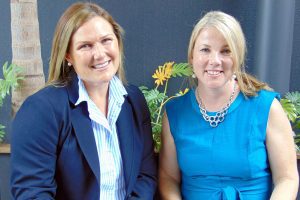An Australian professor is pushing ahead with a simple test that could result in stillbirth rates plummeting worldwide.
A simple blood test to identify babies at risk of dying in the womb could be just three to five years away after scientists pinpointed the role ageing placentas play in stillbirths.
The researchers discovered that placentas, which deliver oxygen and nutrients to unborn babies, age rapidly in the final weeks of pregnancy.
Crucially, they also found deteriorating placentas emit an enzyme called aldehyde oxidase, which ends up in the mother’s blood.
That’s the exciting part because it means a blood test might be able to identify at-risk babies, who can be delivered early before their lifelines fail.
“This is very exciting and I have to say it’s big,” says Professor Roger Smith, of NSW’s Hunter Medical Research Institute.
The blood test is already being developed.
Prof Smith was driving to work one morning about five years ago when he had a light-bulb moment.
He doesn’t like to listen to the radio or music during his commute. For him, it’s valuable thinking time.
That’s how the came to be mulling over the mathematical definition of ageing.
“Most people would say they know what ageing is but it’s difficult to define and there is a mathematical definition – that the risk of death increases with time.”
He was soon at work poring over data with a new perspective and what he found surprised him.
“When I looked at the data on stillbirths – with that definition of ageing in mind – it screamed to me that stillbirth is related to the ageing of the placenta,” he said.
“That was the key idea but then we had to test it. ”
Prof Smith and his colleagues Kaushik Maiti and Zakia Sultana started looking at placentas from 37-week pregnancies and compared them with placentas from 39 and 40 weeks, looking for biochemical markets of ageing.
“We found dramatic changes in those last few weeks of pregnancy,” he said.
While the focus now is on the blood test – including how often mums should be tested for the enzyme – other related research ambitions are already taking shape.
Prof Smith and his team also plan to investigate ways to suppress the enzyme if placentas start to age and deteriorate early in pregnancy, but that’s something that could take a decade.
About one in every 150 pregnancies in Australia ends with stillbirth, but the figure is much higher in most other places.
The team’s discovery will be published in the coming edition of the American Journal of Obstetrics and Gynecology.





















Add Comment